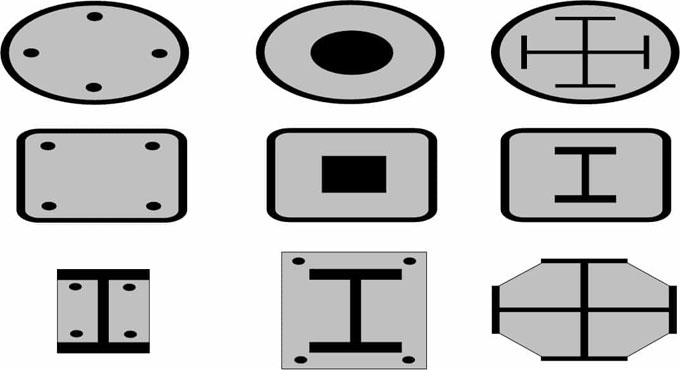
Details about Composite Slabs & Columns and their benefits

Composite slabs:
1. It comprises of profiled steel decking with an in-situ reinforced concrete topping.
2. The decking(profiled steel sheeting) perform as permanent formwork to the concrete as well as offers adequate shear bond with the concrete in order that when the concrete has attained strength, the two materials function mutually & compositely.
3. Distance among 3 m and 4.5 m onto supporting beams or walls.
4. When the slab is unpropped throughout construction, the decking single-handedly withstands the self-weight of the wet concrete and construction loads. Subsequent loads are delivered to the composite section.
5. When the slab is propped, all of the loads should be combated by the composite section.
6. These are normally designed as simply supported members in the normal condition.
Profiled steel sheeting:
1. Depths vary from 45 mm to over 200 mm.
2. Yield strengths vary from 235 N/mm2 to minimum 460 N/mm2.
3. The thickness vary from 0.8 mm to 1.5 mm.
4. The different shapes offer Interlock among the steel and concrete.
5. Decking is also applied to make the beams stable against lateral torsional buckling throughout construction.
6. Improve the stability of the building entirely by behaving as a diaphragm to transmits the wind loads to the walls and columns.
7. Temporary construction load normally manages the choice of decking profile.
Composite Columns:
A steel-concrete composite column stands for a compression member that contains either a concrete encased hot-rolled steel section or a concrete filled tubular section of hot-rolled steel. The existence of the concrete is granted for two ways.
1. Safeguard from fire.
2. It may also withstand a small axial load.
3. To minimize the effective slenderness of the steel member, that raises its resistance capacity against axial load.
The bending stiffness of steel columns of H-or I-section is superior in the plane of the web (?major-axis bending?) as compared to a plane parallel to the flanges (?minor-axis bending?).
The ductility performance of circular type of columns is considerably superior as compared to rectangular types. There is no need to offer extra reinforcing steel for composite concrete filled tubular sections.
Protection from erosion is arranged by concrete to steel sections in encased columns.
When the local buckling of the steel sections is removed, the reduction in the compression resistance of the composite column caused by overall buckling should definitely be permitted. The plastic compression resistance of a composite cross-section shows the maximum load that can be employed to a short composite column.


